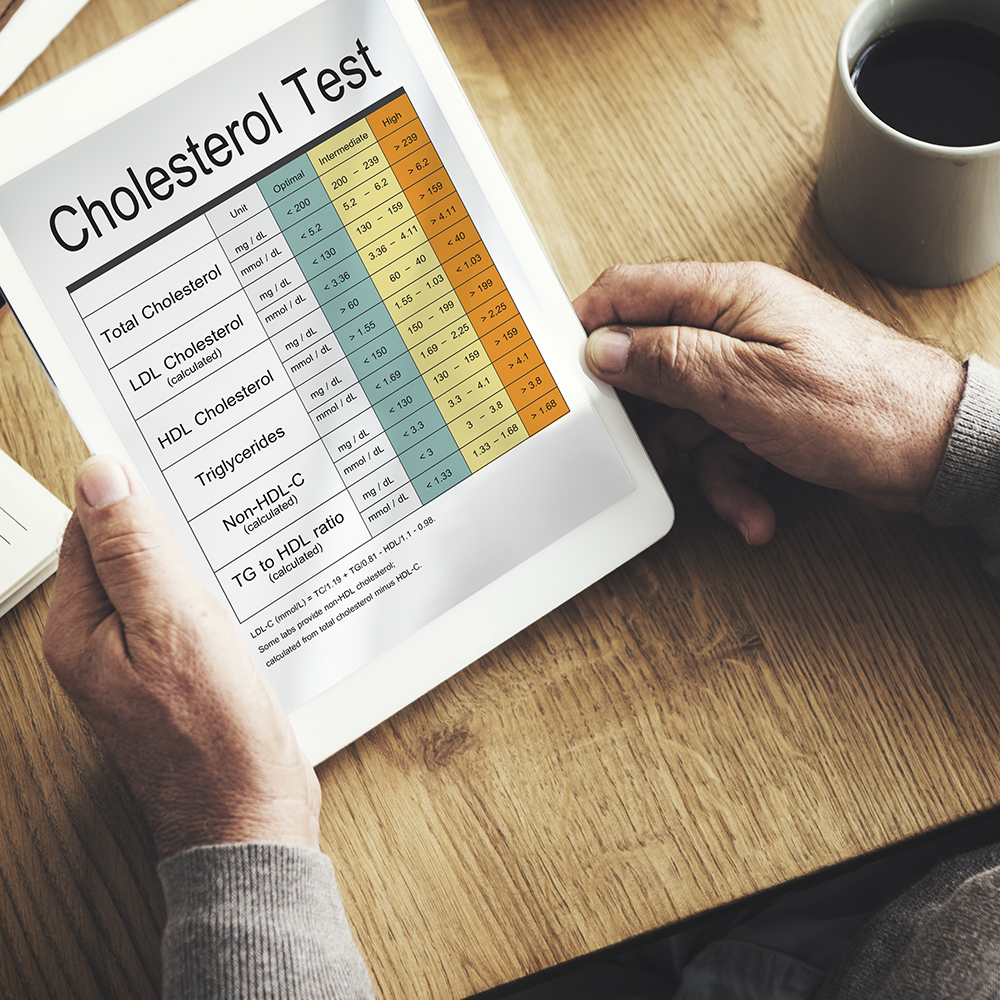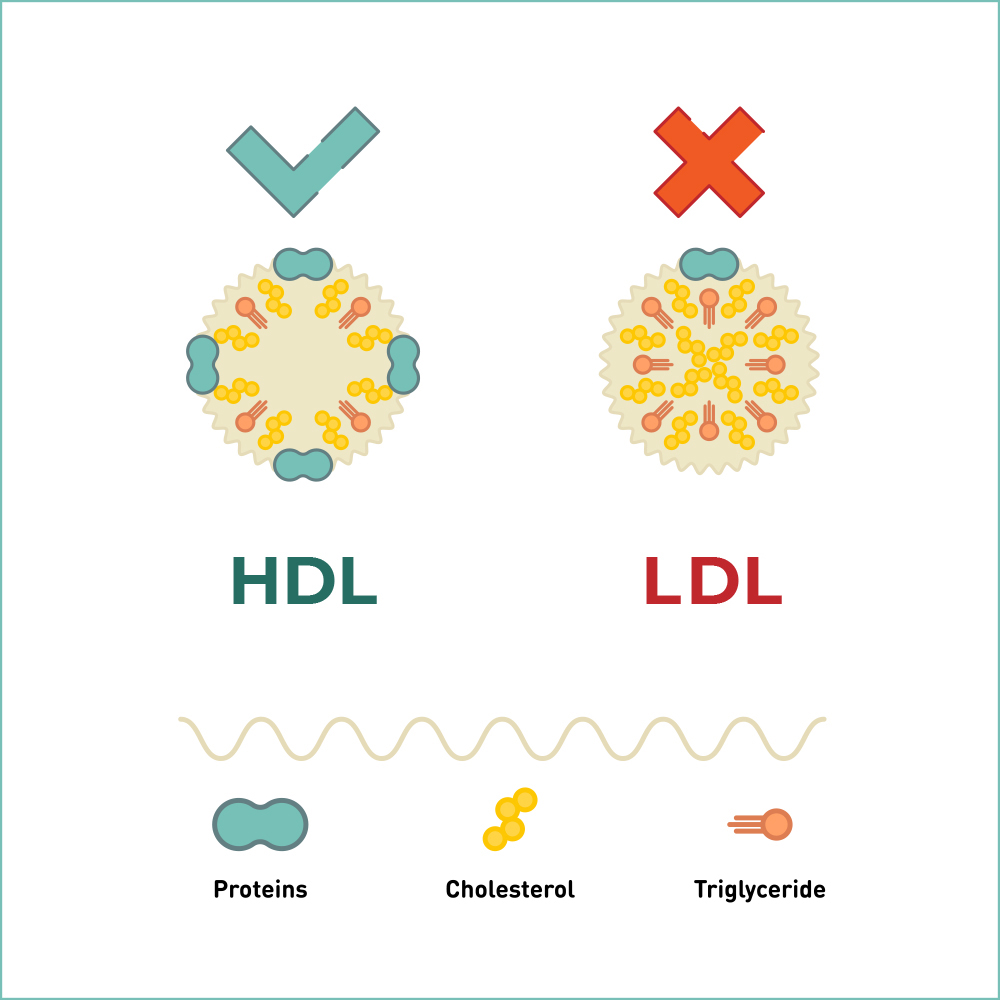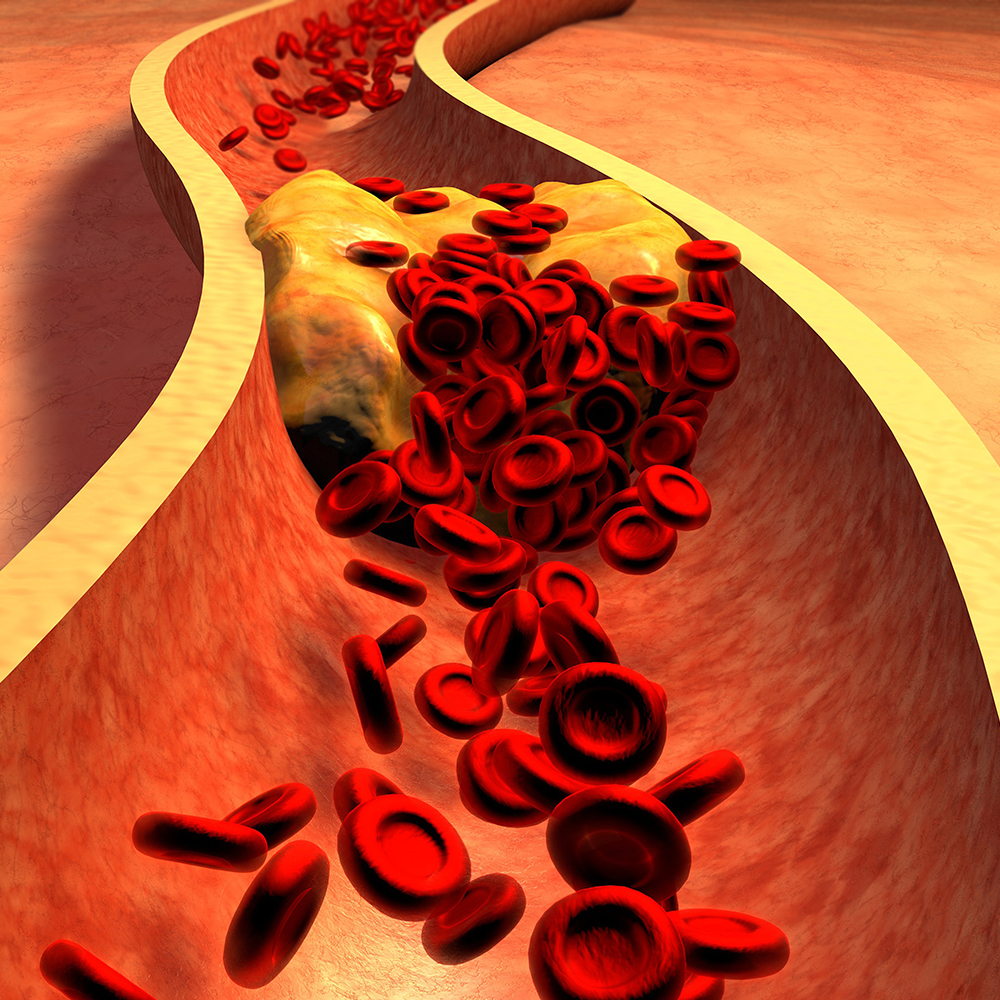CHOLESTEROL
What is cholesterol?

Cholesterol is a water-insoluble lipid molecule that plays a fundamental role for the human and animal organism as it represents an important constituent of plasma membranes, myelin sheath of nerves and even embryonic development. Furthermore, it is a precursor of Vitamin D and bile acids.
In humans, cholesterol has endogenous origin for 70% of the total, while the exogenous share, coming almost exclusively from the intake of fatty foods of animal origin, corresponds to 30% of the total.
The level of cholesterol in the blood is called “cholesterolemia” and can only be detected through specific blood tests, since a deficiency or an excess of cholesterol in blood is not associated with any particular symptoms.
The situation characterized by high levels of cholesterol in the blood is called “hypercholesterolemia”, while a low concentration of cholesterol in the blood is called “hypocholesterolemia”. Both conditions are considered potentially harmful to health.





